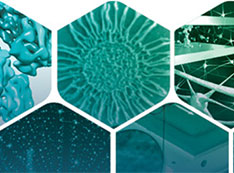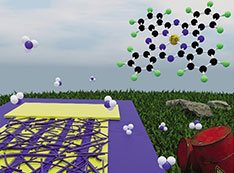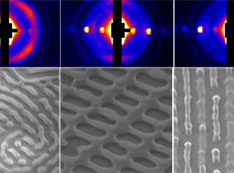Safety Update
improvements to CFN safety
May 17, 2023

Wai-Lin Ng
Greetings, and a warm welcome to users, guests, and students arriving for the summer session. As you arrive on-site to visit Brookhaven this summer, you will notice a lot of ongoing construction and road maintenance. The new Science and User Support Center is being built by the main gate entrance to the laboratory. This new building kicks off the development of the future 60-acre Discovery Park. Please slow down as you approach the traffic circle and yield to trucks and other construction vehicles. It’s a tight turn and these large vehicles need plenty of room to go around it; please do not try to pass or overtake them from either lane. Pay special attention to workers, pedestrians, and cyclists using the circle.
With the greater number of visitors expected during this season, please remember the following rules for driving safely around site:
- Stop completely at stop signs
- Yield to pedestrians in designated crosswalks
- Do not use a handheld cell phone while driving
- Do not exceed the posted speed limit
Tick Awareness
With the summer season upon us, enjoying outdoor activities on Long Island means taking precautions against tick bites and tick-borne diseases. The three types of disease-carrying ticks that attach to humans that are commonly found at Brookhaven are the Deer tick (10-15%), Lone Star tick (80%), and Dog tick (10-15%). The viruses carried by ticks come from small animals (rodents, birds); these ticks are then transported by large carriers or hosts such as deer. When a person is bitten by a tick, they can contract diseases such as Lyme, Babesiosis, Ehrlichiosis, Rocky Mountain Spotted Fever, and Alpha-Gal syndrome (red meat allergy).
What should I do?
- Avoid tick habitats: wooded areas and tall grass near wooded areas.
- Wear light-colored clothing, so ticks are easy to spot, and wear long pants, long sleeve shirts, and long socks. Tuck your pants into your socks.
- Check for ticks on your clothing and skin after outdoor activities.
- Check your pets, which may also pick up ticks.
- Spray shoes and pants with permethrin. DEET-containing spray may be applied to skin or clothes. Picaradin and some botanicals may also be used as repellents.
- Wash and dry clothing at high heat for at least 20 minutes—the high heat kills ticks.
- If you are bitten, remove the tick immediately. Use fine tweezers to grasp the tick as close to the skin as possible and pull it out.
- Watch for any flu-like symptoms (joint aches, fever, and nausea) and/or a bulls-eye rash. Most symptoms appear within two to four weeks of a bite. If any of these symptoms occur, see your doctor.
Additional Resources
Regional Tick-Borne Disease Resource Center, Stony Brook Southampton Hospital
Worker Engagement and Safety Discussions
CFN managers may be present in your work area to observe and to speak with you about your work, experiment, or specific project. The purpose is to engage with individuals on how and what they need to do their work efficiently and safely, and to get direct feedback from them, including safety concerns or suggestions. The overall goal is to enhance a positive safety culture by promoting a questioning attitude and encouraging a healthy respect for what can go wrong.
What should I know?
- Your user Safety Approval Form (SAF) describes the scope of work and the activities of the experiment
- All workers listed on the SAF are trained and must understand the lab practices that ensure their work activities are done safely
- Workers must be aware of what can go wrong
- Recognize when conditions of your experiment change and when to stop and ask questions
- Wear the proper personal protective equipment (PPE) required in the lab and for the work activity
I hope you have an enjoyable and productive summer. If you have any questions, feel free to contact me, Wai Lin Ng (wailin@bnl.gov), or Ryan McFadden (rmcfadden@bnl.gov), our ES&H representative.
— Wai Lin Ng
Manager, ES&H
Energy and Photon Sciences Directorate
2023-21274 | INT/EXT | Newsroom












